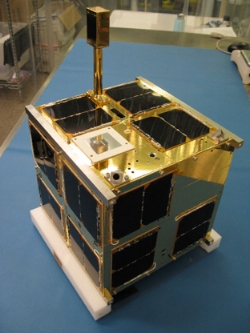Research
Pre-main sequence asteroseismology
Pre-main sequence stellar evolution using accretion (Image credit: Thomas Steindl).
Early stellar evolution
Stars are born from the gravitational collapse of molecular clouds. During the early evolutionary phases, the central temperatures and densities are not yet high enough to initiate nuclear burning, hence, the early star derives most of its energy from gravitational contraction. The early star continues its contraction until its core temperature reaches ~10 million degrees when nuclear burning of hydrogen ignites and remains the dominant source of energy throughout most of the rest of the star’s life. At that moment, stars have reached the so-called zero-age main sequence (ZAMS). The ignition of hydrogen in the star’s core marks another crucial point in stellar evolution: the end of the pre-main sequence (pre-MS) and the beginning of the main sequence (MS) phase.
Young stars with masses between ~1 and 6 solar masses share the same location in the Hertzsprung-Russell diagram as their evolved counterparts in the (post-)MS phase which already burn H in their cores. Hence, it is not possible to constrain the evolutionary stage of a given star by its effective temperature, surface gravity and luminosity only and we require a different strategy to identify stellar youth. This strategy is the analysis of the young stars’ oscillations, pre-main sequence asteroseismology.
The instability regions for pre-main sequence stars are illustrated in the Figure to the right (taken from Steindl et al. 2021).
The imprint of star formation on stellar pulsations
In Steindl, Zwintz & Vorobyov (2022) we describe that stars do not forget their past evolution history once they started to burn hydrogen in their cores. Instead, the way a small stellar seed gains mass through accretion until it becomes a star leaves a traceable imprint on its interior structure. We can use stellar pulsations in pre-main sequence stars to learn about the early evolutionary history of stars. See the article (open access) here: https://www.nature.com/articles/s41467-022-32882-0
Echography of young stars reveals their evolution
In 2014, we revealed a connection between the pulsational properties of pre-main sequence stars and their relative evolutionary stage. The picture shows that the younger and, hence, still larger the pre-main sequence star is, the slower it pulsates. The further a young star evolves towards the zero-age main sequence (i.e., the onset of hydrogen core burning), the faster it pulsates.
See the article here: https://www.science.org/doi/epdf/10.1126/science.1253645
BRITE-Constellation
Another focus of my work lies in the analysis of data obtained with the BRITE-Constellation nano-satellites. The five BRITE satellites are 20-cm cubes each that are observing the brightest stars in the sky from their low earth orbits. More information can be found on the BRITE-Constellation website (www.brite-constellation.at) and the BRITE Photometry Wiki (http://brite-wiki.astro.uni.wroc.pl/bwiki/doku.php?id=start).
List of publications & Links
- My list of publications on the Astrophysics Data Systems(ADS)
- My ORCID page
- Google Scholar link
- Research Gate




